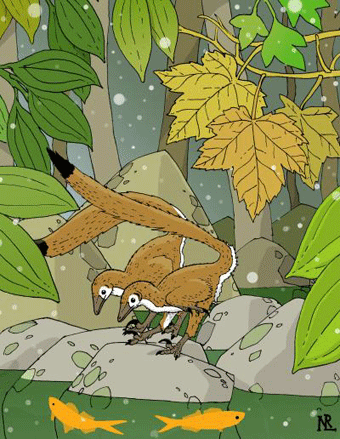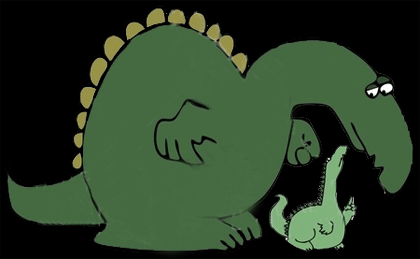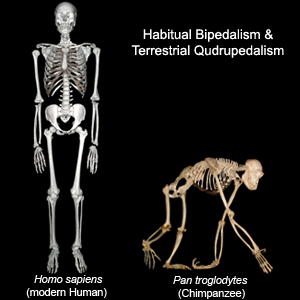Research and discussion topics
Introduction
The news story suggests lots of interesting topics for discussion and research.
Take a look at those we've picked out from the text. Compare ours with those you found using the methods in Getting the topics.
In groups discuss the differences. This isn't about right or wrong. Your choice is as good as ours as long as you can explain and defend it.
Now have a go at some of the topics - ours or yours.
Selected topics
Dinosaurs were not all giants that shook the earth when they walked.
Little Hesperonychus ran about on two legs.
... the marshes and forests that characterised that area at the end of the cretaceous.
But that probably just shows how little we know about dinosaurs.
So the species is named after her.
... a chicken-sized insectivore named Albertonykus borealis.
Want more?
| It includes both an interactive and a printable version of the water cycle and the concept of a water table. |
Dinosaurs were not all giants that shook the earth when they walked.
In your groups prepare a presentation on the different types of dinosaur, looking especially at the size of them. See if you can answer these questions:
Bigger animals often have trouble keeping cool while smaller ones find it hard to keep warm. Why is this?
What is the latest thinking on whether dinosaurs were warm-blooded?
You'll find much more information than you need here.
Little Hesperonychus ran about on two legs.
Two legs or four?
Investigate living things that move around on two legs.
What do they have in common? Why do they gain by using two legs? What do they lose?
There is a theory that walking upright on two legs was one of the things that gave our human ancestors big advantages over other apes on the African grasslands.
What -were those advantages?
Why do birds walk on two legs while most animals walk on four?
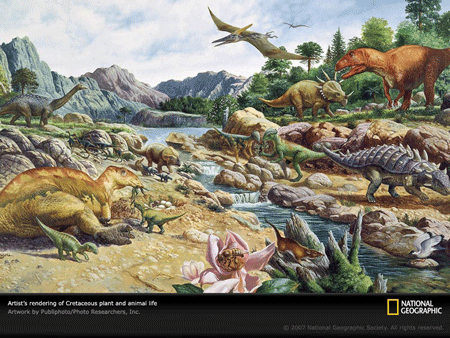
... the marshes and forests that characterised that area at the end of the cretaceous.
Find out as much as you can about the "marshes and forests of the cretaceous". Find out how we know all this. What kind of evidence do we have for it all?
Get the artistic members of your group to put together an image of these marshes and forests using whatever medium they like - paint, crayon, collage, anything.
Meanwhile the wordsmiths in your group should put together some appealing descriptions of the place and the time.
You're aiming to produce an advertisement as part of a marketing campaign for tourist time-travellers to the cretaceous. There's a lot of competition for tourists, so you have to make this part of the past seem especially appealing. But all your words and images should be based on solid evidence,
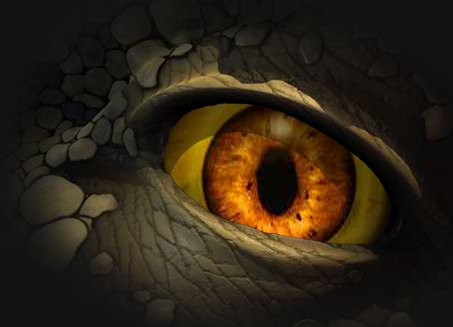
But that probably just shows how little we know about dinosaurs.
Find three things about dinosaurs that scientists have changed their minds about. Take a look here to get you started then try a web search.
Why did the scientists change their minds?
What does this say about science and scientists? Is it:
a) You can't trust them because scientists tell you one thing one day and a different thing the next.
b) Science is a bunch of facts that keep changing.
c) New evidence sometimes means scientific explanations have to be changed. But that doesn't mean there's no such thing as scientific facts. The earth isn't flat, for instance, and it didn't begin in 4004 BC. These are scientific facts. There are lots of them.
.gif)
So the species is named after her.
Find out how new species of animals and plants get their names. Put together a presentation on how it is done nowadays and why, with interesting stories about particular species and the people they are named after.
Take a look at the New York Botanical Garden, for instance, and the Strange Science site.
See if you can find other stories by Googling combinations of the words naming, species, Linnaeus and anything else you can think of. Who was Linnaeus?
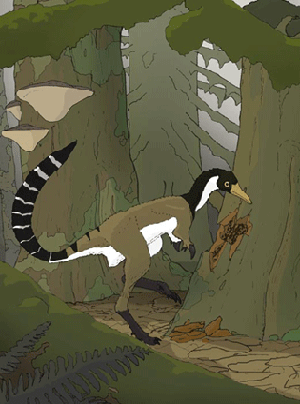
... a chicken-sized insectivore named Albertonykus boreali
Here's what Nick Longrich had to say about that one:
"Albertonykus was a small dinosaur, maybe about the size of a large chicken or a small cat. It was about 3 feet long, with a long, slender tail, gracile hindlimbs like a cartoon roadrunner, and short, stumpy forelimbs, with a huge claw on each thumb.
"We don't have any skull bones, but related animals from Mongolia show that the animal had a long, narrow snout. It's a very chimeric animal. In my opinion, it's rather like something Dr. Suess would design, it's not something you seriously imagine would really exist.
"However, these animals clearly did exist, for millions of years."
First find out what "chimeric animal" means and explain it to your colleagues. Now in groups investigate other such strange animals, choose one that particularly appeals to you and put together a presentation about it.
Try to explain why its strange features might have evolved.
Want more?
1. Discovery's comprehensive guide to dinosaurs. "Covering everything about dinosaurs, from when and where they lived to what they ate and how they..."
2. Travel back in time and meet the Jurassic giants roaming a 3D dinosaur landscape. It's an old favourite - the game inspired by the computer animation of the BBC TV series Walking with Dinosaurs.
3. Learn about dinosaurs with KidsDinos.com. "Find out which dinosaur was the largest, which was the smallest, which had the most horns, the longest neck, or which ate the most food."
4. The Dinosaurs Activity Center offers free online dinosaur games for kids, dinosaur crafts, and dinosaur printables, "so kids can have fun while they learn about these ancient reptiles."
5. Name that species after yourself.


